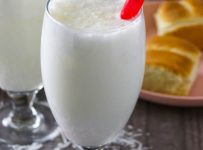Laing is made of dried taro leaves cooked with pork belly, coconut milk, and chili peppers. It’s easy to make and delivers big flavors. This classic Bicolano dish is creamy, spicy, and delicious with steamed rice!
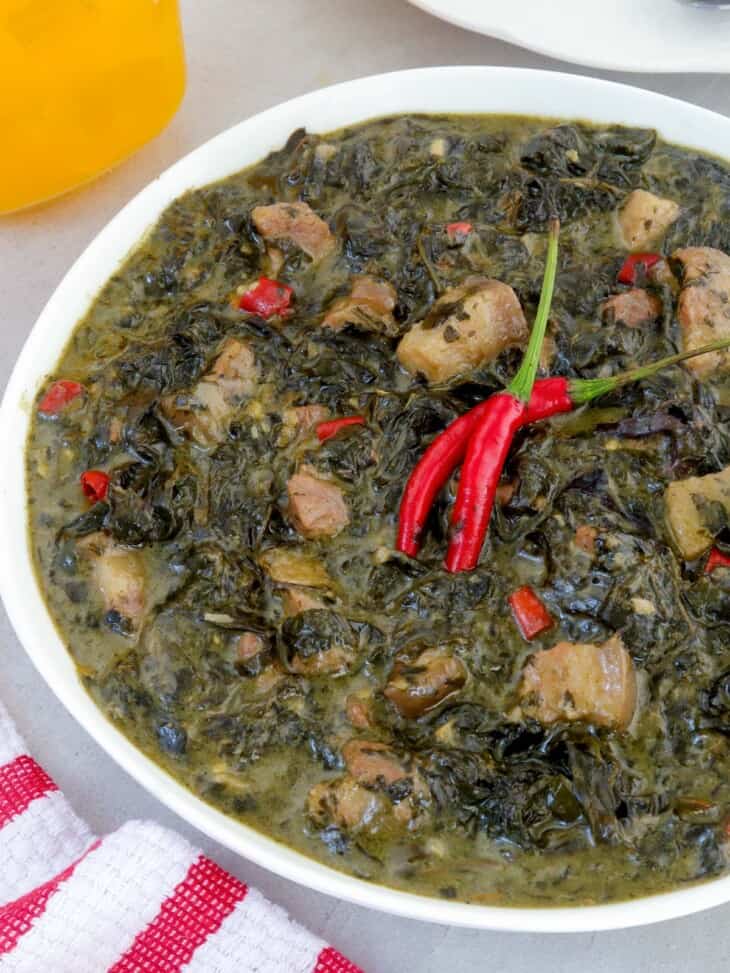
Coconut is one of the top 5 significant crops of Bicol, so it is to be expected that coconut milk is a prominent ingredient in this region’s cuisine. Like adobo sa gata, Bicol Express, and gising-gising, laing is another classic example of Bicolano’s love affair with piquant chili peppers and their wide use of gata in cooking.
And I have to say, this beautiful flavor combination is my favorite, too. Can’t beat the rich taste of meat or vegetables stewed in rich, creamy coconut sauce and copious amounts of chilies in my book. I wax poetic about ginataang talong every chance I get and seriously think it’s one of our best recipes here on the blog.
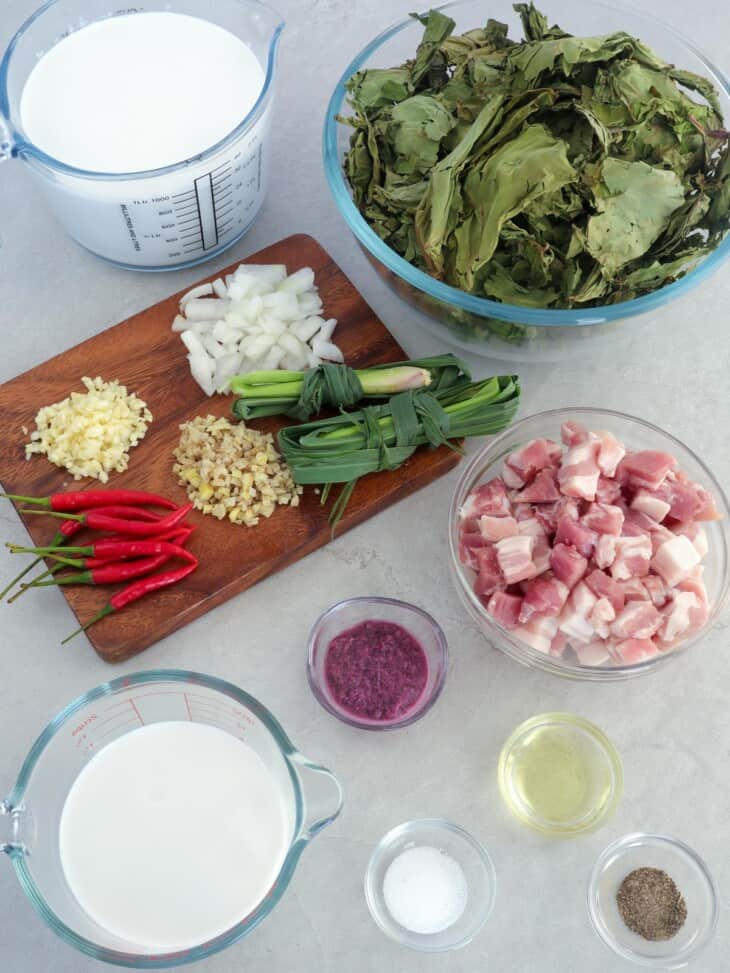
What is Laing
Laing is a Filipino delicacy made of shredded or whole taro leaves, coconut milk, meat or seafood, chili peppers, and various aromatics, including onions, garlic, ginger, and lemongrass (tanglad).
Although said to have originated from Bicol, the original dish is primarily similar in ingredients but different in cooking preparation from the version the rest of the country is familiar with. Authentic Bicolano laing, commonly known in the region as pinangat na gabi, does not use shredded taro leaves; instead, whole leaves are wrapped around the pre-cooked meat or seafood mixture to form pouches and then steamed in coconut milk until fork-tender.
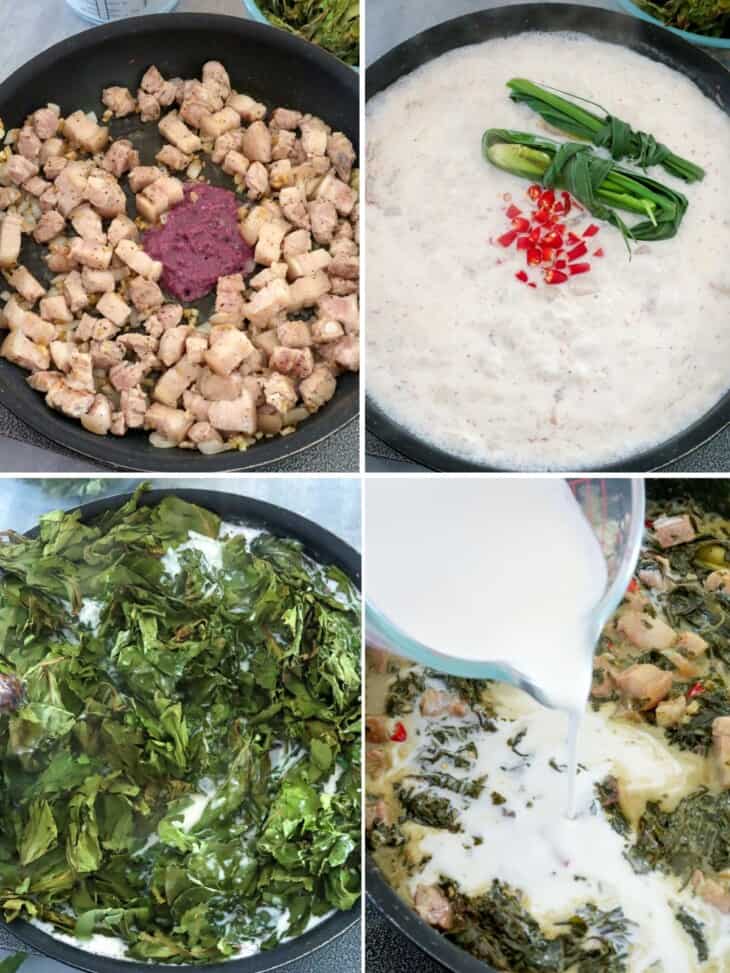
Why do Taro Leaves Cause Itchiness
Gabi leaves should be washed thoroughly and cooked adequately as they are high in calcium oxalate, which can cause an “itchy” or burning sensation in the mouth. Drying the leaves under the sun before cooking is said to lessen the amount of these crystals.
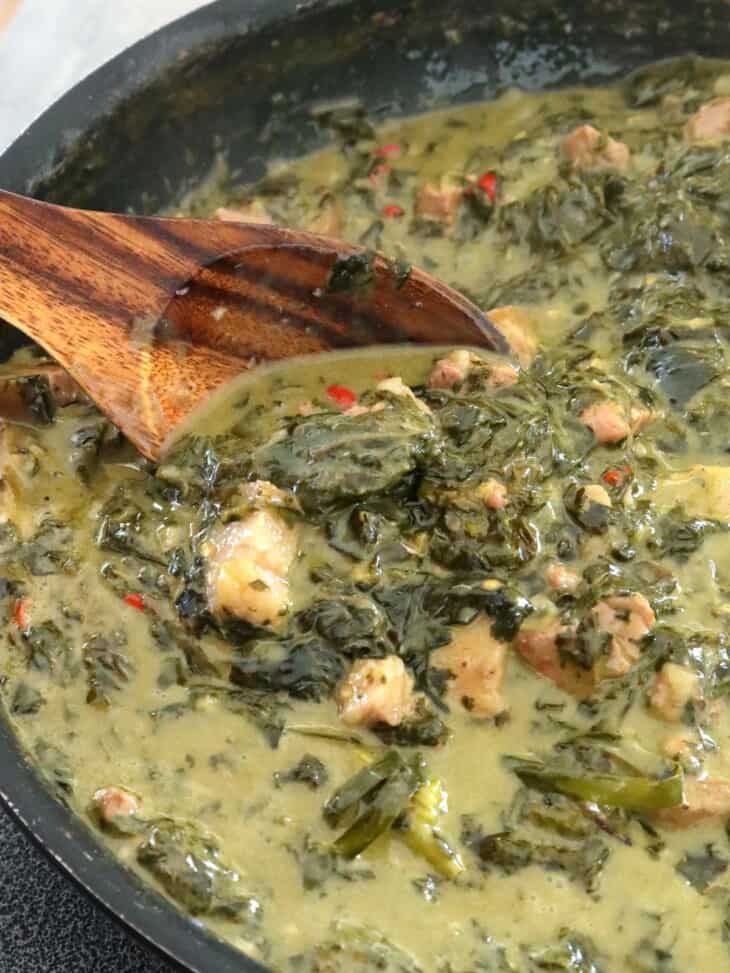
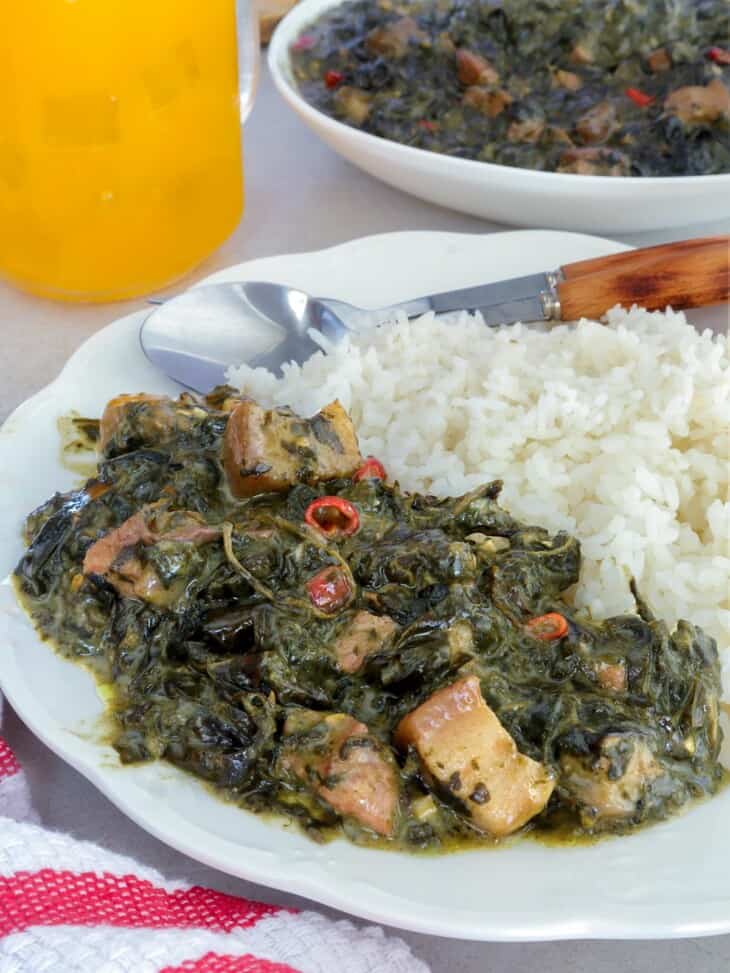
How to serve and store
- Laing can be enjoyed as a main or side dish for lunch or dinner. For a hearty, flavor-packed meal, serve with steamed rice and your favorite grilled or fried fish.
- Store in airtight containers and refrigerate for up to 3 days or freeze for up to 2 months. Do not keep it outside of refrigeration for too long, as it contains coconut milk and will spoil quickly, especially in warmer weather.
- Reheat in a pan on low heat to 165 F, stirring well.


